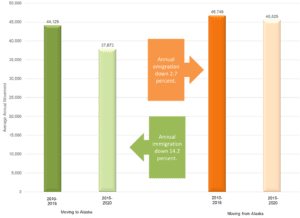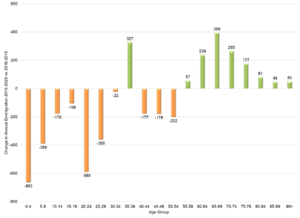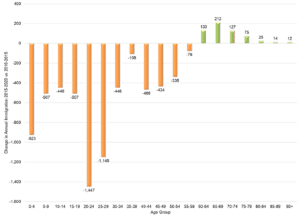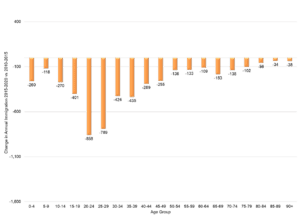The premise of Wharton School of Business Professor Adam Grant’s new book, Think Again, is simple- our brains are wired to develop short cuts, which in the neuroscience world we call “cognitive biases.” Changing those biases takes time and energy. Fundamentally, our brains are pattern recognition machines. If you’ve had children you know that silence for a toddler usually means, right? They almost certainly getting into trouble. We carry this bias forward even when our children aren’t toddlers so that if they’re too quiet we find ourselves asking “Timmy, what are you doing?” The poor kid is probably just sitting reading a book (or playing on a phone), but our leftover bias from when he was a toddler means the brain is wired to alert us that he may be getting into trouble. Dr. Grant’s notes that learning these patterns takes time and energy but unlearning them takes even more time and energy. The process of unlearning also requires us to consider the discomforting fact that we might have been wrong for some time.
A couple weeks back I received an email asking me to support a bill in the legislature. One of the arguments for support was the need to stem the “extraordinary increase” in outmigration rates for 35-to-45-year-old Alaskans. I think by now most of us have heard that Alaska has lost population four years in row, but the claim about the 35-45 age group caused me to pause and ask, “I know population is falling, but do I know the “who” of the population decline?” I realized the answer was “no.” Additionally, there was something about the 35-to-45 flight argument that just didn’t feel right to me. So, I set out to “think again.”
Alaska’s Department of Labor and Workforce Development (ADOLWD) is amazing. I’ve said it before, and I’ll keep saying it until they stop delivering. It took just five minutes to find ADOLWD’s emigration and immigration data. The first data I analyzed was total emigration and immigration from 2015-2020 and from 2010-2015. Conventional wisdom says that Alaska’s 2015-2018 economic recession greatly increased emigration from the state. However, the data doesn’t support the conventional wisdom. They clearly indicate that annual emigration declined by 2.7 percent for the 2015-2020 period compared to the 2010-2015 period.
Okay, there’s the first myth busted. What really changed was the number of people who chose to move to Alaska, between the five year period immigration dropped 14.2 percent from an average of 44,125 people per year to an average of 37,873 per year (see Figure 1). Alaska’s challenge isn’t people leaving at a faster rate, but the perceived reasons to move to Alaska are not as strong as they once were.
Source: Alaska Department of Labor, PFD Migration Data, 2021.
The figure above answers the question of how we’re losing population. It does not answer the questions of who is leaving Alaska and who is less likely to come to Alaska. ADOLWD’s data answers both questions. In comparison to the 2010-2015 period between 2015 and 2020 we saw higher emigration by Alaskans 55+; a fact which isn’t particularly surprising given the increasing number of Alaskans in this age category and that a high proportion of Alaskans have historically retired elsewhere (see Figure 2). The only other group that saw an increase in emigration between periods was the Age 35–39 cohort; on average 327 more of these Alaskans emigrated annually between 2015-2020 than between 2010-2015. That number equates to about a 9 percent increase in annual emigration for this group. Emigration by those aged from 40-54 and those under 30 fell between periods. Thus, the data suggests that overall people of childbearing age and children were slightly more likely to stay during the recessionary period. Now, this shift could have been a distinct choice, but it could also reflect more people not having the money to move during the recession.
Source: Alaska Department of Labor, PFD Migration Data, 2021.
As you might expect from the introduction, the immigration data isn’t pretty. Annual immigration dropped for every group under 60 years-of-age while increasing slightly for those over 60. While immigration dropped for all groups under 60 it fell the most for people in their 20s. Immigration by twentysomethings has dropped by nearly one-quarter. As a state, we are simply a less attractive option to early career individuals who aren’t already in-state than we were a decade ago. A quote from an Alaskan friend whose daughter is graduating this year from college out-of-state and choosing to stay out-of-state sums up our situation: “All we know is the prospects in Alaska are pretty abysmal for her right now.” Alaska’s challenge is that we are a less attractive alternative than we used to be in the competition for young talent and attracting this talent is a key to future economic and population growth.
Source: Alaska Department of Labor, PFD Migration Data, 2021.
The “net” of all this data is that our net migration position worsened across every age group but particularly with those age 20-29, age 15-19, and age 30-39 (see Figure 4). Once into adulthood, the negative shift in net migration rates largely shrank the older the age cohort. Basically the older we get, the less economic shifts affect whether we’re attracted to, or repelled from, a place to live. That said, we’re losing the migration battle on every front, but mostly because fewer people are coming here not because more people are leaving.
Source: Alaska Department of Labor, PFD Migration Data, 2021.
Jonathan’s Takeaway: Alaska’s defining value proposition for the young has greatly diminished relative to other options. We’re in a position where even Alaskan-born young adults who would like to move home are finding fewer compelling reasons to come here than they have in the past. These people are the future of the Alaska economy, and we must find a way to restore or reestablish the defining value proposition that brought so many of us to Alaska in the first place if we want our economy and Alaska to grow in the future.
Jonathan King is a consulting economist and Certified Professional Coach. His firm, Halcyon Consulting, is dedicated to helping clients reach their goals through accountability, integrity, and personal growth. Jonathan has 24 years of social science consulting experience, including 17 years in Alaska. The comments in this blog do not necessarily represent the view of employers and clients past or present and are Jonathan’s alone. Suggested blog topics, constructive feedback, and comments are desired at askjonathan@apcm.net.











